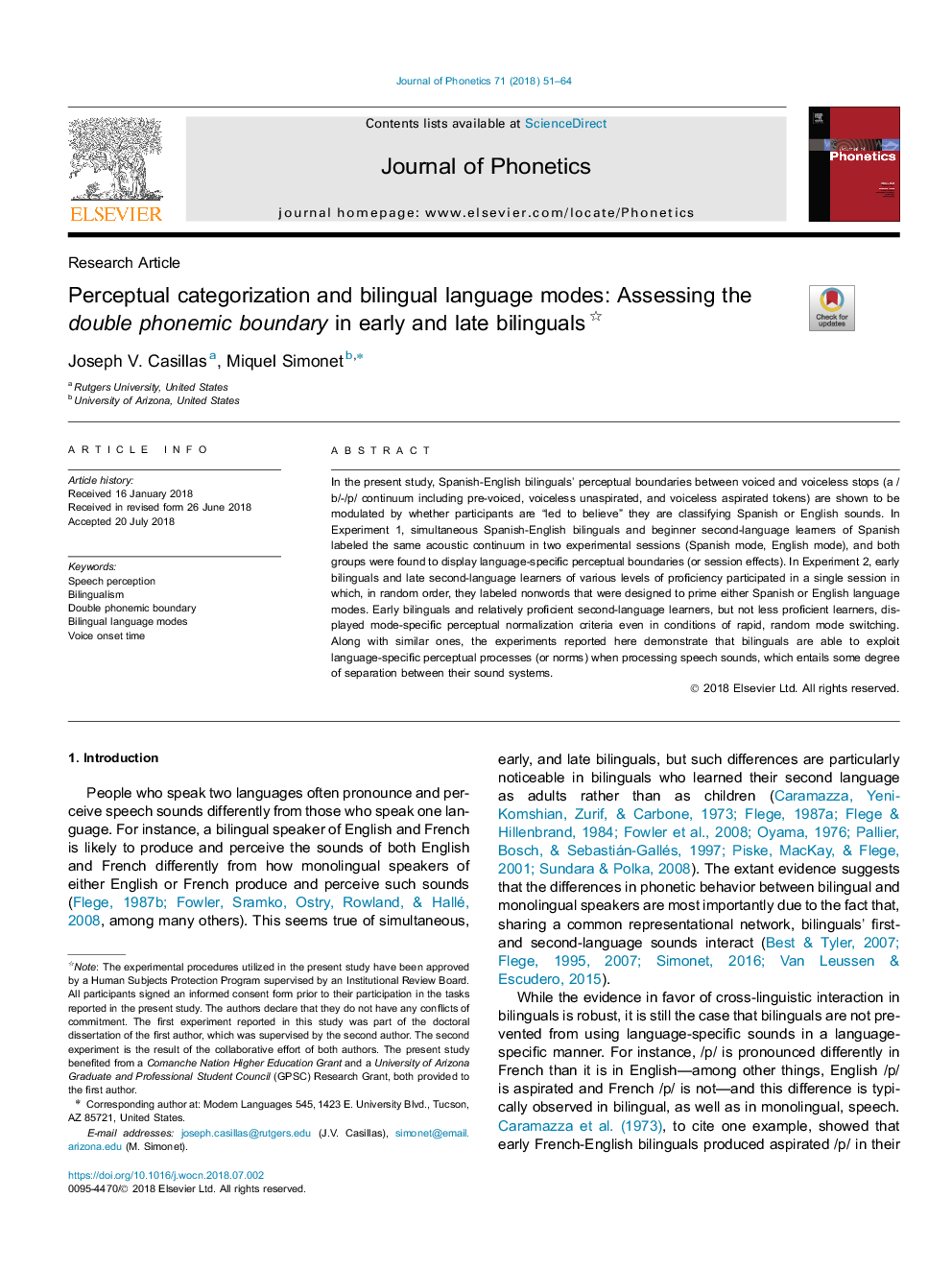| Article ID | Journal | Published Year | Pages | File Type |
|---|---|---|---|---|
| 7532684 | Journal of Phonetics | 2018 | 14 Pages |
Abstract
In the present study, Spanish-English bilinguals' perceptual boundaries between voiced and voiceless stops (a /b/-/p/ continuum including pre-voiced, voiceless unaspirated, and voiceless aspirated tokens) are shown to be modulated by whether participants are “led to believe” they are classifying Spanish or English sounds. In Experiment 1, simultaneous Spanish-English bilinguals and beginner second-language learners of Spanish labeled the same acoustic continuum in two experimental sessions (Spanish mode, English mode), and both groups were found to display language-specific perceptual boundaries (or session effects). In Experiment 2, early bilinguals and late second-language learners of various levels of proficiency participated in a single session in which, in random order, they labeled nonwords that were designed to prime either Spanish or English language modes. Early bilinguals and relatively proficient second-language learners, but not less proficient learners, displayed mode-specific perceptual normalization criteria even in conditions of rapid, random mode switching. Along with similar ones, the experiments reported here demonstrate that bilinguals are able to exploit language-specific perceptual processes (or norms) when processing speech sounds, which entails some degree of separation between their sound systems.
Related Topics
Social Sciences and Humanities
Arts and Humanities
Language and Linguistics
Authors
Joseph V. Casillas, Miquel Simonet,
